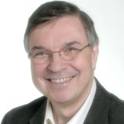
Introduction: The influence of using 24-hour ambulatory blood pressure (ABP) thresholds recommended by the American Heart Association (AHA) (24-hour mean ABP >95th percentile and ABP load >25%) or the European Society of Hypertension (ESH) (mean 24-hour ABP >95th percentile or >130/80 mm Hg if mean ABP 95th percentile exceeds 130/80 mm Hg) on the diagnosis of pediatric hypertension has been understudied.
Methods: In a cross-sectional, retrospective study of 159 children from a tertiary care outpatient clinic, we classified office blood pressure (OBP) as normotension or hypertension based on the OBP thresholds recommended by the American Academy of Pediatrics (AAP) and the fourth report on the diagnosis, evaluation, and treatment of high blood pressure in children and adolescents (herein referred to as the fourth report) by the National High Blood Pressure Educational Program Working Group on High Blood Pressure in Children and Adolescents separately. Thereafter, we evaluated the agreement between the ambulatory AHA and ESH thresholds for diagnosing normotension, white-coat hypertension (WCH), masked hypertension (MH), and hypertension based on the patient's ABP and OBP hypertension pattern.
Results: With office hypertension as per the AAP thresholds, the AHA and ESH thresholds classified 85% of subjects similarly into normotension, WCH, MH, and hypertension (κ = 0.78; 95% CI, 0.67-0.89). The agreement between the AHA and ESH thresholds did not change when OBP was reclassified by the fourth-report OBP thresholds (κ = 0.77; 95% CI, 0.65-0.88). With OBP classified by either AAP or fourth-report thresholds, the ESH thresholds diagnosed 6% to 7% more children as hypertensive, whereas the AHA threshold classified 11% more children as normotensive.
Conclusion: The AHA and ESH thresholds have good agreement in classifying OBP. However, the ESH threshold classifies more OBP as hypertensive and the AHA threshold classifies more OBP as normotensive.
Available at: http://works.bepress.com/guido-filler/8/

Copyright 2020 International Society of Nephrology. Published by Elsevier Inc. This article is published under a CC BY-NC-ND license (https://creativecommons.org/licenses/by-nc-nd/4.0/)
The article was originally published as:
Sharma, A., Altamirano-Diaz, L., Grattan, M., Filler, G., & Sharma, A. P.